While bees are fantastic little insects for pollination, they sometimes aren’t welcomed with open arms in your backyard. Many people have bee sting allergies and don’t want the fuzzy creatures too close to their houses. Bees can also do some property damage if their population is left uncontrolled.
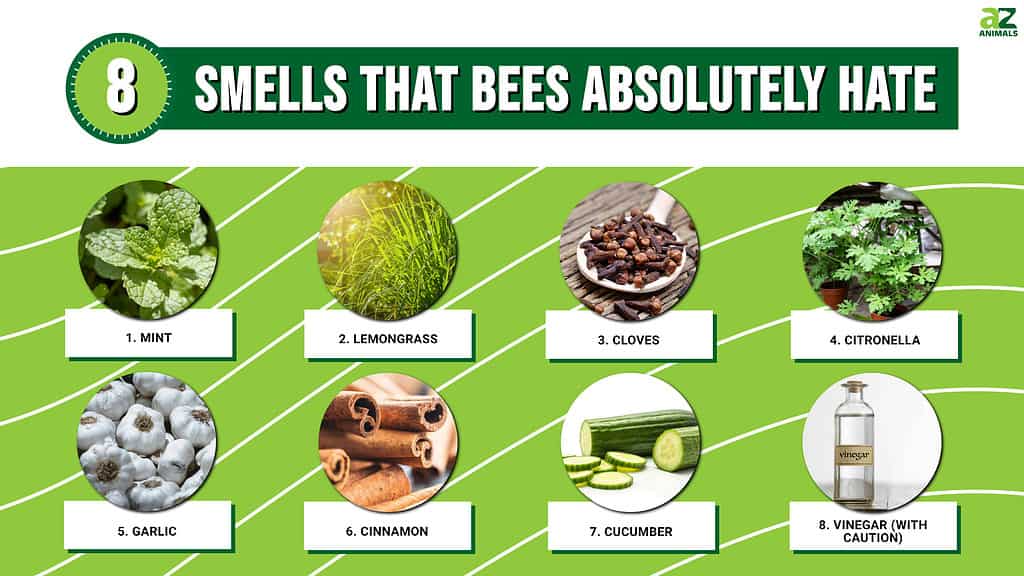
If you prefer to use essential oils instead, you can dilute mint in a spray bottle and spray it around the area daily.
©
Luckily, quite a few herbs, plants, and household items give off a scent that repels bees. Many of these scents are beautiful plants that improve the landscape while also discouraging bees from visiting.
Bees’ Sense of Smell: 100 Times that of Humans!

Bees have an incredible sense of smell, and you can use several plants to repel them from your yard.
©Aleksandr Rybalko/Shutterstock.com
If you’re wondering how a light scent like a planted herb can repel a bee, remember that their sense of smell is about 100 times more sensitive than ours. This makes it so bees are much more affected and aware of smells than we are. In fact, bees were trained by the military in bomb detection — and were quite effective at it. They can sniff out a landmine from three miles away. Some bees have even been trained to detect cancer by their sense of smell. With this elevated sense of smell, bees have a few scents that they absolutely cannot stand.
Scents that Repel Bees
1. Mint
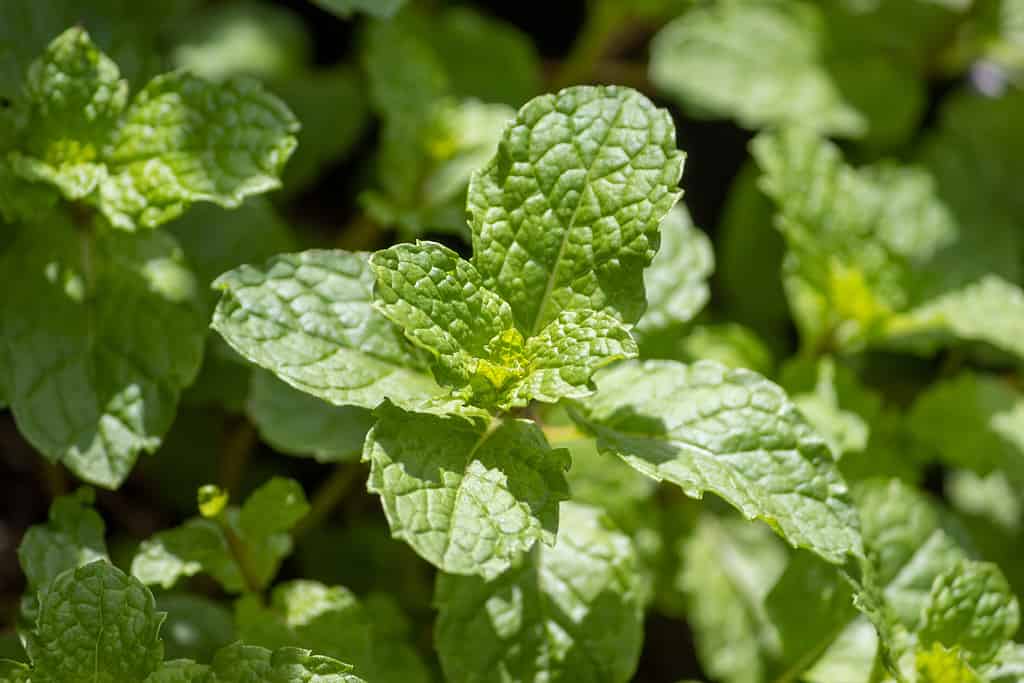
Bees do not like mint plants and will stay away from them.
©Leo Herdy/Shutterstock.com
Bees do not like strong-smelling plants, and mint is at the top of the list. Peppermint and spearmint are very common and easy-to-grow plants. While peppermint has shown to be slightly more effective than spearmint as a bee repellant, both types of mint can work. Peppermint can be planted directly in your garden, but be aware that it spreads quickly and acts a bit like a ground-crawling plant. If you don’t mind it taking over your garden space a bit, then mint is a great choice for your bee-repellant herb garden.
Mint can also be planted in pots to prevent spreading. Place the potted mint in an area where you have more bees or a doorway that is usually left open. The advantage of potted mint over planted mint is the ability to move it around if the bees move and not let it spread.
If you prefer to use essential oils instead, you can dilute mint in a spray bottle and spray it around the area daily. Just don’t spray it directly on the bees, as that can cause some irritation and danger to the helpful pollinators. You can also soak a few cotton balls in the essential oil and place them around your garden and other areas.
2. Lemongrass
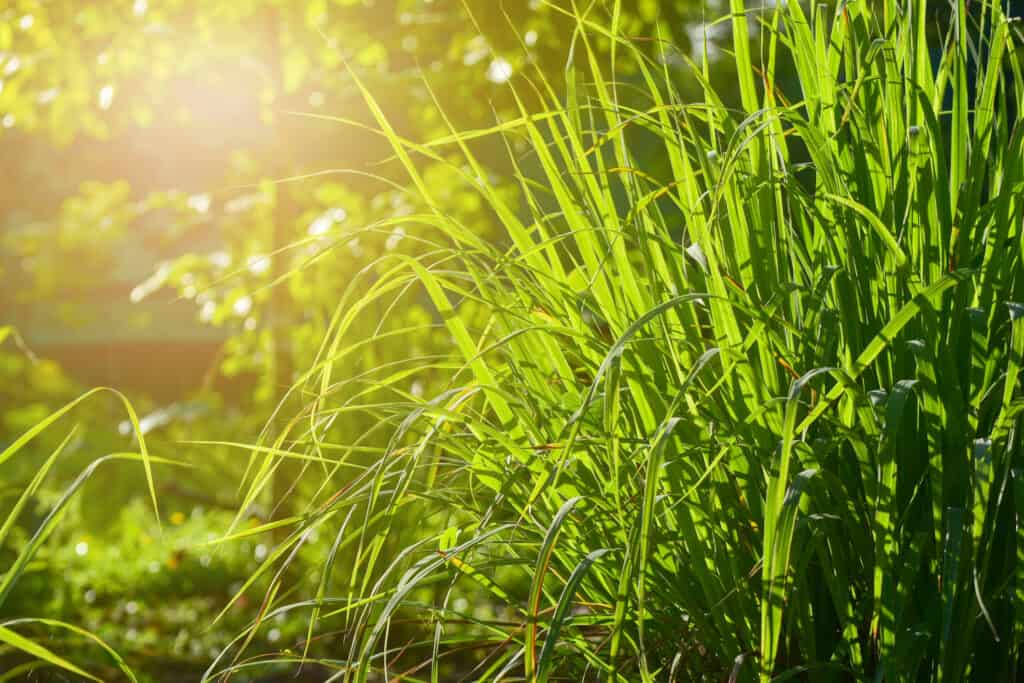
Lemongrass is a great addition to your herb garden if you want to repel bees.
©iStock.com/ATP-Photographer
As a well-known insecticide, lemongrass is equally repellent to bees as it is to most other insects. Lemongrass is a great addition to an herb garden and grows well in full sun. True to its’ name, lemongrass boasts a sour and strong citrusy scent that is very similar to a lemon.
Lemongrass loves heat and does best when planted in the late spring, but can grow all year in more tropical areas. It’s very easy to grow both indoors and outdoors, so it’s a good choice for repelling bees in many places. Planting it in a pot means moving the lemongrass around and even keeping it on your patio to repel bees that get a bit too close.
Like peppermint, an essential oil made of lemongrass works equally well to repel the bees. If you want extra repellent against the bees, try soaking up cotton balls of lemongrass to place around your yard with peppermint.
3. Cloves
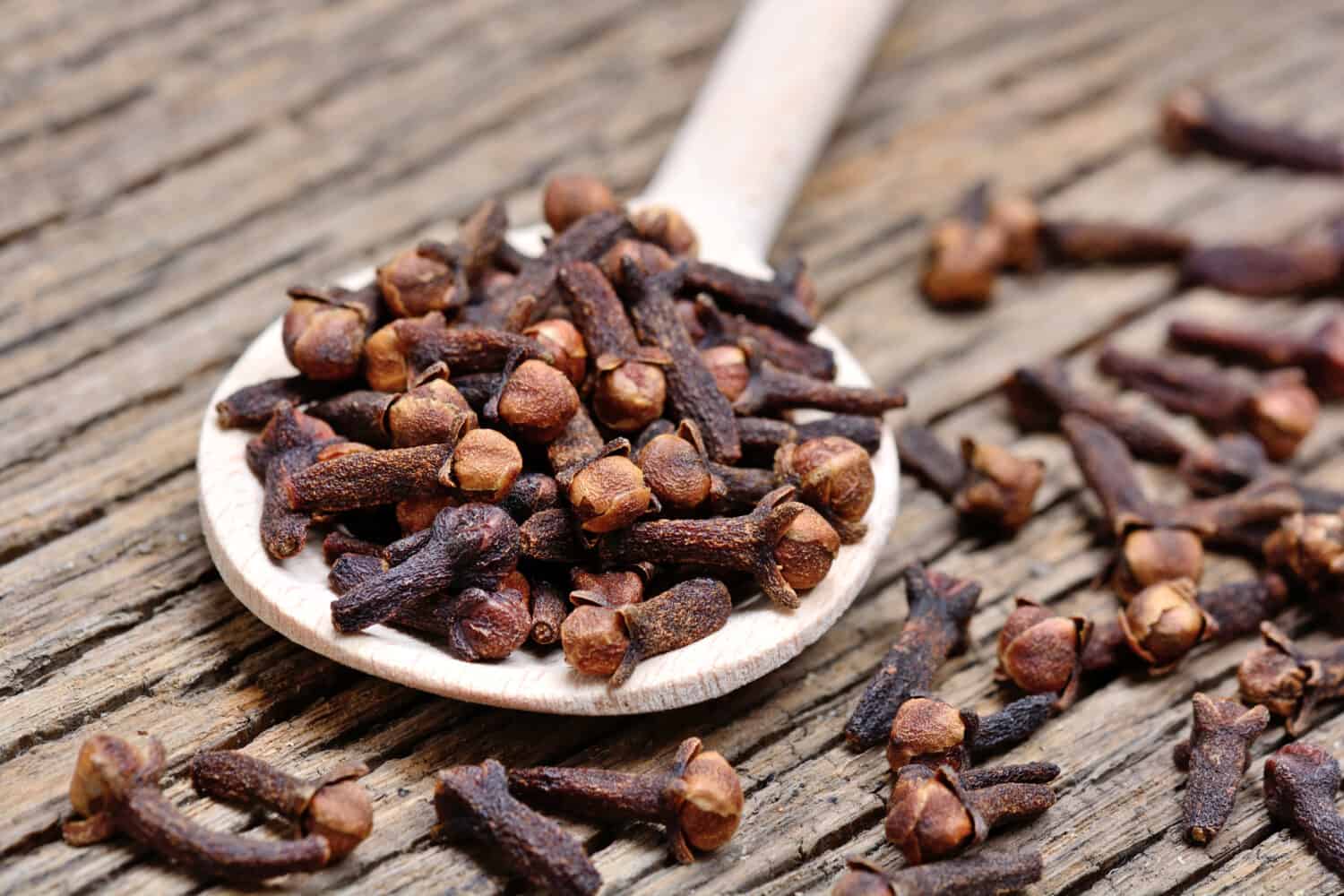
Cloves have a strong, powerful scent that repels insects, including bees.
©DeeaF/Shutterstock.com
Another great herb scent that repels bees is cloves. You’ve likely eaten cloves or used them in a recipe — think pumpkin pie — but they’re also awesome bee repellents! Clove powder can be purchased at most grocery stores, and you can sprinkle it around hives on the ground.
You can also purchase clove plants and plant them in your garden and around your doorways. Planting cloves is a great way to have seasoning for autumn desserts as well as keep the bees away. Plus, your porch will smell amazing!
4. Citronella
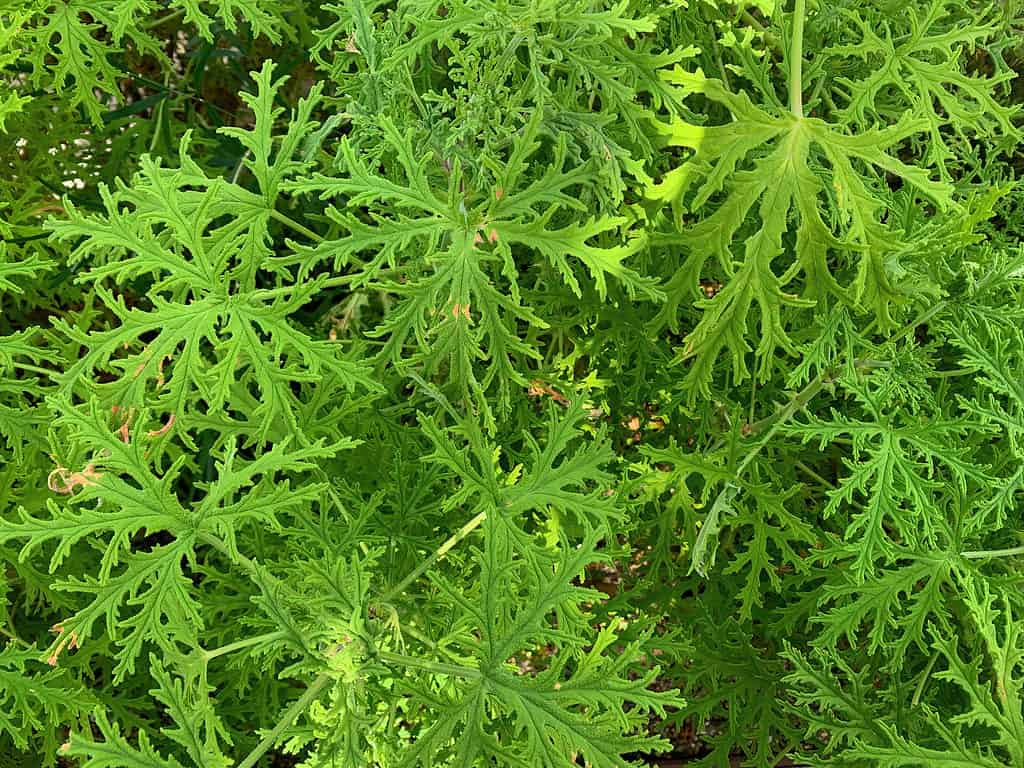
Citronella scares away bees and mosquitos.
©iStock.com/PotatoeHead
An extremely effective mosquito repellent, citronella is also great for scaring away bees. Citronella comes in many forms– candles, sprays, and essential oils. Any form can be used indirectly on the ground around your yard, on a patio table, or soaked in cotton balls.
Seen most commonly in stores as a packaged product, some don’t realize that citronella is actually a plant. It is a type of perennial grass that is easy to grow, returning year after year. Citronella loves the heat and prefers warm places, so it grows best in more southern growing zones. In colder places, citronella can be placed in pots and moved in during the wintertime. This can make it possible to keep the same plant alive year-round.
5. Garlic
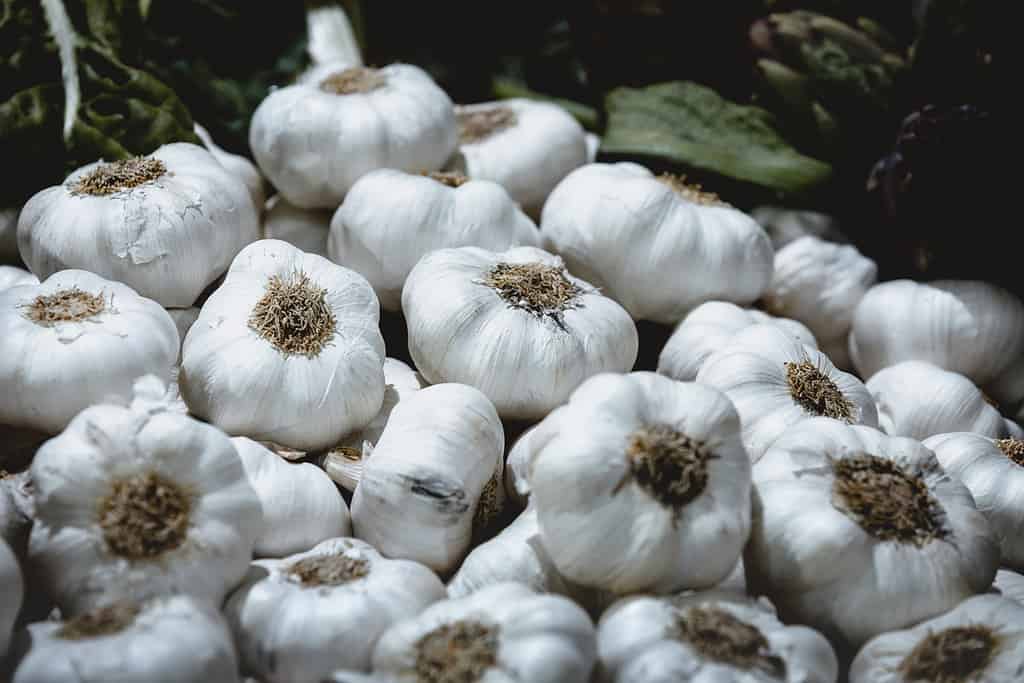
Garlic is one of the most powerful smells that repel bees.
©Carl.Salisbury/Shutterstock.com
The scent of garlic is a deterrent to many insects, and it’s pretty obvious why. Not many people, animals, or other creatures can stand the strong aroma of fresh garlic. Garlic can be used around the garden in many different ways. It’s a great addition to a small edible garden and provides you with a tasty addition to meals once it’s finished growing. However, garlic plants take many months to grow and are root vegetables, so their smell may not be quite as strong as fresh garlic.
Some people suggest mincing fresh garlic and spreading it around the hive or areas where bees are commonly found. You can also mince the garlic and shake it in a spray bottle with some warm water. Let the water sit for a few hours, shaking it occasionally, then spray the mixture around your garden. You can also make garlic oil and soak cotton balls to set around the garden area. All of these options are a bit more work than simply planting garlic, so consider getting a crop going and using the other techniques when necessary.
6. Cinnamon
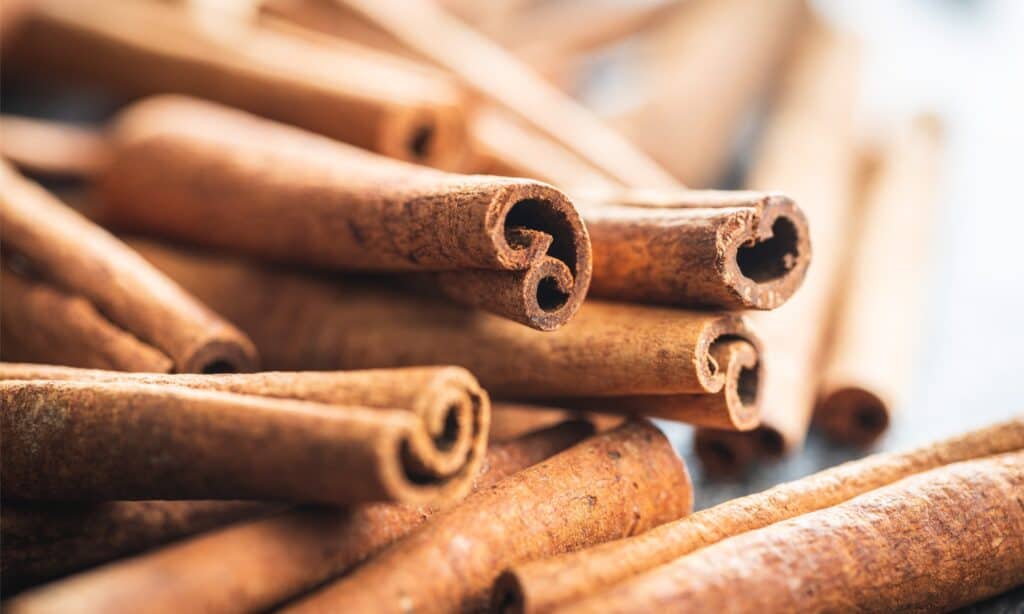
Using a cinnamon tree to repel bees is probably not as effective as placing the bark or powder around
©iStock.com/jirkaejc
Another very strong scent, cinnamon, disturbs bees and repels them. You can place cinnamon bark in cups or lay it around areas in your garden. Try to put the cinnamon bark as close to the hive as possible to affect the bees as closely as possible.
You can also get ground cinnamon bark or cinnamon powder and spread it around the area where the bees live. It grows outdoors in warmer regions, but cinnamon sometimes grows as a potted tree in colder areas. Using a cinnamon tree to repel bees is probably not as effective as placing the bark or powder around, but it can be a great way to supply you with both.
7. Cucumber

Placing the cucumber peels on aluminum, like a dish or foil, causes a chemical reaction that can heighten the acidic smell.
©PixaHub/Shutterstock.com
Cucumbers are a great bee repellent and one of the only fruits on our list. Bees hate the smell of cucumber peels, so place the peels in areas near their hive. The reason that bees dislike cucumbers so much is that they put off an acidic scent. Placing the cucumber peels on aluminum, like a dish or foil, causes a chemical reaction that can heighten the acidic smell. Try placing foils with cucumber peels in areas with bees to optimize their repelling abilities.
Cucumbers can also be grown in the ground as a way to deter bees. Of course, they will give off a much stronger scent after peeling. However, even the smell of a cucumber plant is enough to bother bees, so it’s worth growing a fresh crop. If anything, you’ll have tasty farm-fresh fruits and a supply of peels to repel the bees with.
8. Vinegar (With Caution)
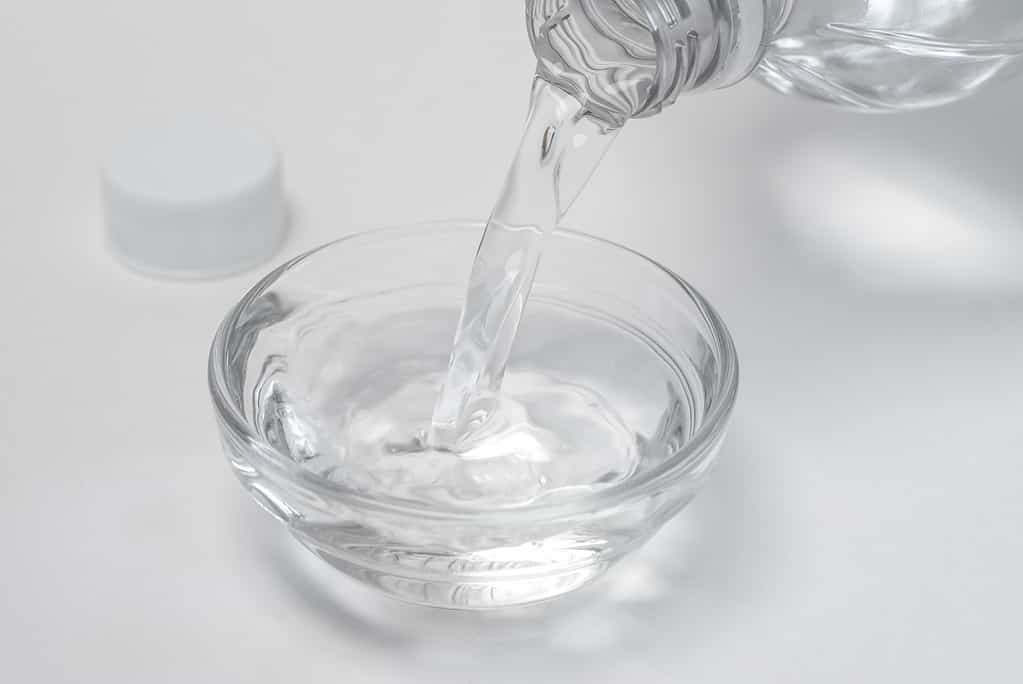
Vinegar is a scent to repel bees but should be used carefully.
©iStock.com/Michelle Lee Photography
There is a reason why vinegar is the last recommendation on our list to repel bees. This is because vinegar can actually be toxic to bees if used in large quantities. Because bees do so much for the environment and pollinate plants, it’s detrimental to everyone to hurt the bees.
If none of the above options are available to you or aren’t working, you can use vinegar sparingly. White distilled vinegar is recommended due to its light scent. It can be poured into dishes, left around your garden or the hive, or soaked onto dryer sheets. Do not spray vinegar directly onto the bees or their hive. Just remember, vinegar should be treated as a last resort to repel bees. While we may not want them in our yard, we definitely want these fuzzy creatures in our world.
What Smells Make Bees Aggressive?

Bees are confused by a similar-smelling ketone substance that is found in the majority of perfumes.
©IHOR SULYATYTSKYY/Shutterstock.com
Bees generally do not like the smell of certain things, like mammals, lotions, sprays, and even bananas. Their specific breed behavior, indicated by several factors such as heritage, time of year, and color, can lead to more or less aggression around these items. Scents that may trigger this are items that contain a ketone substance that is similar to the pheromone 2-heptanone, which is an alarm pheromone they produce that alerts the colony to danger.
Bees are then confused by the similar-smelling ketone substance that is found in the majority of perfumes used in items such as make-up and cosmetics, deodorant, nail polishes, and cologne or perfume. People who use any of these items increase their chances of an aggressive bee encounter. Bees will then emit another scent or pheromone, that is similar to that of bananas, which will incite other bees to sting.
Summary of 8 Scents That Bees Hate
Bees are extremely important to the environment and we do not recommend extermination. Use these methods to keep them away from people who are allergic:
| # | Scent | How to Use |
|---|---|---|
| 1 | Mint | Plant in pots or spray essential oil where bees aren’t wanted |
| 2 | Lemongrass | Plant in pots or spray essential oil where bees aren’t wanted |
| 3 | Cloves | Clove powder can be sprinkled where bees aren’t wanted |
| 4 | Citronella | Candles, oils and sprays can be used as they are for mosquitoes |
| 5 | Garlic | Minced garlic can sit in water for a while – then sprayed |
| 6 | Cinnamon | Place bark or sprinkle powder where bees aren’t wanted |
| 7 | Cucumber | Place cucumber peels on sheets of aluminum foil and place where bees aren’t wanted |
| 8 | Vinegar | Should only be used as a last resort! Soak a dryer sheet and place where bees aren’t wanted |
The photo featured at the top of this post is ©
Thank you for reading! Have some feedback for us? Contact the AZ Animals editorial team.






